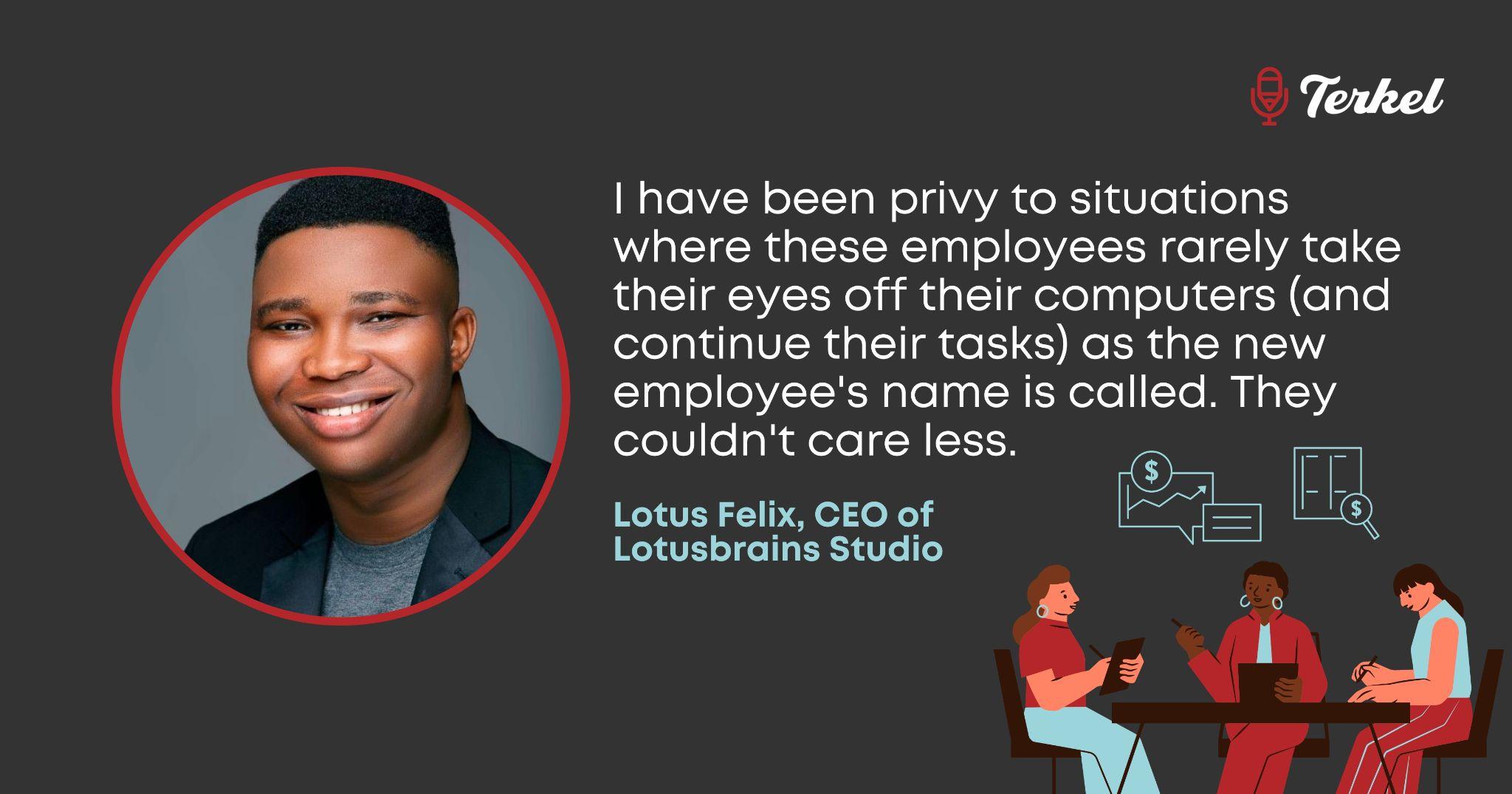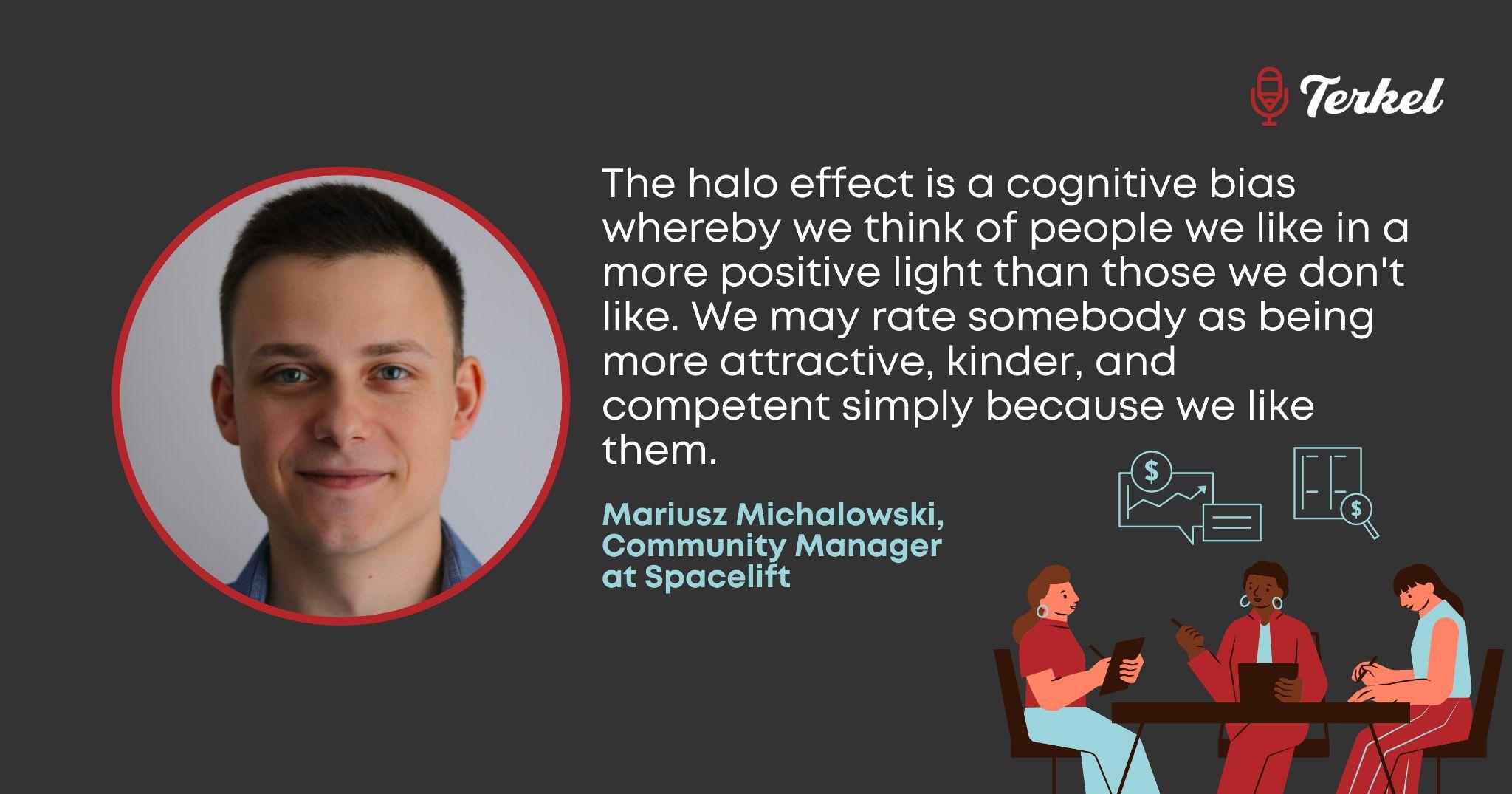What’s an example of implicit bias in the workplace?
From ageism in the workplace to offering a person “a seat at the table”, here are the 10 answers to the question, “What’s an example of implicit bias in the workplace?”
- Ageism
- Assuming Employees’ Capabilities Before Offering Promotions
- Educational Pedigree
- Dramatic Interest in Colleagues With Non-English Names
- The Use of Gendered-language In Job Ads
- Halo Effect
- Gender Bias On Task and Role Assigning
- Beauty Bias
- When We Hire People Like Us
- Offering a Person “a Seat at the Table”
Ageism
Ageism in the workplace is harmful because it perpetuates negative stereotypes and prejudices about older workers and can lead to discrimination and unfair treatment. This can result in older workers being passed over for promotions or job opportunities, being given less challenging or lower-paying assignments, or being treated with less respect and consideration than their younger colleagues. Older aged workers can provide a lot of expertise and wisdom that can be valuable to any work team, so make sure to remove this kind of unfair thinking in the workplace.
Jacob Dayan, Co-founder and CEO, Community Tax
Assuming Employees’ Capabilities Before Offering Promotions
An example of implicit bias in the workplace is assuming an employee’s capabilities before offering them a promotion. So many companies have executives advancing their team members based on a potential that may or may not be well-founded, simply because of implicit biases.
These unconscious beliefs can induce hiring managers to opt for stereotypical assumptions when considering the suitability of a candidate; leading to missed opportunities for capable individuals. Such predisposed thought processes must unfortunately be taken into account in order to tackle workplace diversity and encourage inclusivity.
Travis Lindemoen, Managing Director, nexus IT group
Educational Pedigree
An example of implicit bias in the workplace is when a hiring manager only considers candidates from certain backgrounds or with certain qualifications, such as a college degree, without considering other qualified applicants.
This type of bias can lead to an unbalanced and unfair hiring process that does not consider all potential employees equally. Additionally, implicit bias can manifest in other ways such as when a manager gives preferential treatment to certain employees or when there is a lack of diversity in the workplace.
Michael Alexis, CEO, tiny campfire
Dramatic Interest in Colleagues With Non-English Names
Throughout my career, I have come across countless incidences of implicit bias. But one stands out: an unconscious increase in curiosity when a new employee with a non-English name is introduced in a workplace. I will explain.There are offices where employees are relatively apathetic as their new colleague is being introduced. I have been privy to situations where these employees rarely take their eyes off their computers (and continue their tasks) as the new employee’s name is called. They couldn’t care less.But strangely, these same indifferent employees suddenly become significantly curious about (and massively interested in) the new employee being introduced if they had a non-English name.I have seen these employees literally startle when they hear the non-English name of the new hire and energetically look up to see and learn more about the new hire.
Lotus Felix, CEO, Lotusbrains Studio

The Use of Gendered-language In Job Ads
The tech industry can be a boy’s club; as a recruiter, I cherish the opportunity to help companies diversity their workforce. One thing I’ve been urging hiring managers to consider is the use of gendered language in job postings. Without realizing it, HR tends to use a certain set of lingo for predominantly female-occupied areas, like administration, and another for predominantly male-occupied fields, like programming. It’s implicit bias; they don’t realize they’re doing it. But vague phrases like “people-focused” or “go-getter” can perpetuate gender division. Be specific about the skills needed instead. By avoiding euphemisms, you’re more likely to land the person right for the role.
Rob Reeves, CEO and President, Redfish Technology
Halo Effect
An example of implicit bias in the workplace is the halo effect. The halo effect is a cognitive bias whereby we think of people we like in a more positive light than those we don’t like. We may rate somebody as being more attractive, kinder, and competent simply because we like them.This can lead to problems in the workplace when people make decisions about who to hire or promote based on their gut feeling rather than on evidence. For example, if you strongly dislike someone, you might be less likely to give them a job, even if they are highly qualified, simply because of your personal biases. This could lead to less-qualified people being employed.
Mariusz Michalowski, Community Manager, Spacelift

Gender Bias On Task and Role Assigning
In the workplace, implicit bias can manifest in a variety of ways. One example is related to assigning tasks and responsibilities and evaluating performance. Imagine a situation when leaders or managers tend to assign specific tasks and responsibilities to certain people. But when implicit bias is involved, the decisions are made based on stereotypes and assumptions and not on the experience and skills of the employee.
For instance, a manager may unconsciously assume that women are better suited for administrative tasks while men are better suited for leadership roles. This can result in women being pigeonholed into specific roles and not being given the opportunity to develop their skills and abilities in other areas.
This example of implicit bias is harmful because it can lead to workplace discrimination and inequality and prevent individuals from reaching their full potential. It also means putting the wrong people in the wrong position and making them deal with unsuitable tasks.
Nina Paczka, Community Manager, Live Career
Beauty Bias
Implicit bias is a form of bias that occurs unintentionally. Our experiences unconsciously affect our decisions daily. Implicit bias can negatively affect employee morale and performance if you do not regulate them.
Beauty bias is one example of implicit bias. It occurs when people judge others based on their appearance and attractiveness. Beauty bias happens worldwide. People often feel judged based on their looks. People feel that those with good looks have a certain privilege that allows them to get ahead. Women especially face a lot of criticism if they do not apply makeup or care about their looks.
Judging people based on their appearance instead of their performance adversely affects the employees. Companies should keep an out for unfair practices whenever possible. They should also encourage employees to speak up if they face discrimination.
Eva Tian, Growth Strategy Manager, Mynd
When We Hire People Like Us
An example of implicit bias in the workplace is when we are more likely to hire someone who is like us in terms of race, gender, or ethnicity. This can also show up in the workplace when people are promoted based on their similarity to their boss or when raises and bonuses are given to those who are most like the decision-makers. But it can also be exhibited in more subtle ways when people are more likely to give positive performance reviews to employees who resemble them.
Fraser Matthews, President, NetCoins
Offering a Person “a Seat at the Table”
While it seems at best considerate and at least innocuous, claiming to use our privilege and power to offer a person with marginalized identities “a seat at the table” can be an act that reinforces oppressive systems and mindsets about people who are disenfranchised by inequitable systems.
The issue here is that offering a person a seat centralizes privilege and position rather than considering the power and presence marginalized people always and already have. We can https://blog.featured.com/examples-of-implicit-bias-in-the-workplace this mentality with one of acknowledgment instead: Let’s focus our attention on the experiences and needs of groups who are marginalized by the inequitable systems we are all operating within.
Sonia David, President & CEO, Sonia M. David
Submit Your Answer
Would you like to submit an alternate answer to the question, What’s an example of implicit bias in the workplace?
